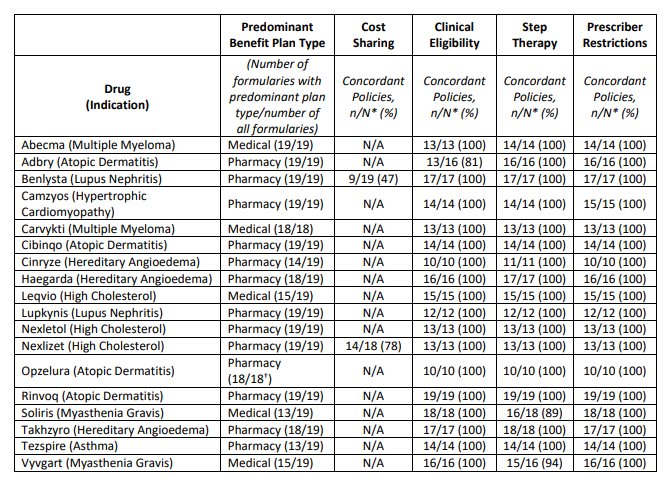
In the US, suicide is the second to seventh leading cause of death among women of reproductive age (10-54 years) (Heron, 2019). Although people with previous depression and/or suicidal ideation (SI) are known to be at higher risk, EI can vary considerably over short periods of time (Kleiman et al., 2017). Therefore, research has attempted to identify factors that impact acute risk among these groups. Potential risk factors have been identified, such as daily negative affect (Gee et al., 2020), hopelessness, and loneliness (Kleiman et al., 2017); However, it is challenging to establish whether these factors simply correlate with SI or actually predict its occurrence. Furthermore, these factors vary similarly over time and, as such, are equally difficult to predict.
The menstrual cycle has been proposed as a possible acute risk factor for SI following cross-sectional evidence of increased hospitalizations during particular phases of the menstrual cycle (Saunders & Hawton, 2006). Menstrual disorders (Kuehner and Nayman, 2021), including premenstrual dysphoric disorder (PMDD) and premenstrual exacerbation (PME), also suggest that the menstrual cycle could be a trigger for depressive symptoms, perhaps due to increased hormonal sensitivity (Schweizer-Schubert et al. ., 2021). However, prospective studies are needed to understand how SI varies with menstrual cycle among at-risk populations and to explore whether menstrual cycle could be a useful, time-varying predictor of acute suicide risk.
This study aims to evaluate daily suicidal ideation (SI) and other affective symptoms along with menstrual cycle phase to explore two hypotheses: (1) the perimenstrual phase will be associated with higher SI and affective symptoms than all other phases; and (2) the periovulatory phase will be associated with lower SI and affective symptoms than all other phases.

Previous research has suggested that suicidal ideation may fluctuate across different phases of the menstrual cycle. [Figure by Sawyer (2023)]. See figure in full size.
Methods
38 naturally cycling women with suicidal ideation in the past month responded to daily text messages asking if they had menstrual bleeding that day. Based on this information, the researchers applied forward and backward counting (day 1 is the first day of menstrual bleeding) to calculate the phase of the menstrual cycle:
- Periovultory (day -15 to -12),
- Perimenstrual (Day -3 to 2),
- Midluteal (every day between periovulatory and perimenstrual), and
- Mediofollicular (every day between the perimenstrual period and the following periovulatory period).
Participants also rated seven items from the Suicidal Ideation Questionnaire for Adults and eight items from the Daily Record of Severity of Problems (core symptoms of PMDD: depressed mood, hopelessness, worthless/guilty, anxiety, mood swings, rejection sensitivity , anger/irritability, interpersonal relationships). conflict) every day. They were also asked to keep their medication use stable during the measurement period.
The researchers performed a multilevel regression to compare each participant’s daily suicidal ideation (SI) and affective symptoms between each of the phases of their menstrual cycle (within-person analysis). Separate analyzes were conducted to investigate whether pain influenced participant-reported symptom severity, but no substantial changes in results were found.
Results
Hypothesis 1: The perimenstrual phase will be associated with greater suicidal ideation (SI) and affective symptoms than all other phases.
- The authors found that SI and all affective symptoms were greater in the perimenstrual phase compared to the periovulatory phase and all except worthlessness/guilt were greater in the perimenstrual phase compared to the midluteal phase.
- When comparing the perimenstrual phase with the mid-follicular phase, only anxiety, mood swings, rejection sensitivity, anger/irritability, and interpersonal conflict were different (higher in the perimenstrual phase).
Hypothesis 2: The periovulatory phase will be associated with lower suicidal ideation (SI) and affective symptoms than all other phases.
- The researchers found that daily SI was similar between the periovulatory phase and the mid-luteal and mid-follicular phases.
- Furthermore, none of the affective symptoms differed between the periovulatory and midluteal phases.
- Depression, hopelessness, and worthlessness/guilt differed between the periovulatory and mid-follicular phases.
Overall, the models predicted that menstrual cycle phase could explain 25% of the variance in daily SI and 10–30% of daily affective symptoms.

The phase of the menstrual cycle explained 25% of the variation in daily suicidal ideation and between 10 and 30% of daily affective symptoms in the 38 women with natural cycles studied.
Conclusions
This prospective study concluded that daily suicidal ideation (SI) (and other affective symptoms) are exacerbated with the menstrual cycle, peaking in the perimenstrual phase and reaching their lowest levels in the periovulatory phase.
Although This study explores the longitudinal correlationsUnlike causal relationships, it provides evidence that The menstrual cycle may be a predictable candidate risk factor for acute suicide risk., which could be used in clinical practice. Furthermore, it provides additional justification for exploring the causal relationship and underlying mechanisms.

The menstrual cycle could be a useful, time-varying predictor of acute suicide risk among at-risk populations.
Strengths and limitations
This study is strengthened by the use of prospective daily ratings, the use of validated measures of suicidal ideation (SI) and affective symptoms, and the high participant response rate (89% of possible daily ratings were completed). However, there are also a number of limitations that must be taken into account. Primarily, the observational nature of this study and the focus on longitudinal correlations means that No conclusions can be drawn about causality from any of these findings..
The power of this study was limited by the small sample size (N=38), which means that only simple statistical models can be performed. The sample may also limit the generalizability of the findings, as it included only those with SI in the past month but without a recent suicide attempt and primarily white participants with college-level education. Although participants’ medication use remained stable throughout the study, almost half of the participants were taking SSRIs (selective serotonin reuptake inhibitors), which are an effective treatment for depressive symptoms and therefore could potentially reduce its variation throughout the menstrual cycle. Therefore, it is unclear whether the same patterns would be observed at different levels of suicide risk severity and within other demographic groups.
The measurement period was also relatively short (at least one menstrual cycle), and although a longer measurement period may reduce the number of daily ratings completed due to high participant load, it would be useful to examine the relationship between daily suicidal ideation (SI) and menstrual cycle phase over a longer period of time.

This study is limited by the small sample size. The observational nature of this study means that no conclusions can be drawn about causality.
Implications for Practice
Primarily, this study provides implications for future research in this field by providing a strong argument for further exploration of the menstrual cycle as an acute risk factor among reproductive-aged women with ongoing suicidal ideation (SI).as well as identify the mechanisms that may underlie the relationship. The authors of this study examine hormonal sensitivity as a possible mechanism by which subgroups of women have an abnormal reaction to the normal hormonal changes that occur throughout the menstrual cycle. While some research has supported the hormone sensitivity hypothesis (Pope et al., 2017), there are other promising mechanisms that should also be considered, such as inflammation and genetics (Tiranini and Nappi, 2022). Establishing how the menstrual cycle might affect SI and other affective symptoms could provide insight into the possible development of treatments to reduce fluctuations in such symptoms.
However, as this article cannot make causal inferences regarding the mechanisms through which SI and affective symptoms fluctuate across the menstrual cycle, there are limited implications for practice at this stage. If future research supports the menstrual cycle as an acute risk factor for SI, then it may be helpful for clinicians to consider the menstrual cycle when developing risk monitoring procedures and coping mechanisms with patients. It will be helpful for patients to have a better understanding of when the severity of SI may be at its peak. This means that support can be provided at appropriate times to women experiencing these exacerbations.

The menstrual cycle may be useful for clinicians to consider in monitoring risks and developing coping mechanisms with patients. However, more research is needed to understand how the menstrual cycle and suicidal ideation are related.
Declaration of interests
None.
Links
primary job
Owens, S.A., Schmalenberger, K.M., Bowers, S., Rubinow, D.R., Prinstein, M.J., Girdler, S.S., and Eisenlohr-Moul, T.A. (2023). Cyclic exacerbation of suicidal ideation in female outpatients: Prospective evidence from daily ratings in a transdiagnostic sample. Journal of Psychopathology and Clinical Sciences.
other references
Vaya, BL, Han, J., Benassi, H., & Batterham, P.J. (2020). Suicidal thoughts, suicidal behaviors, and self-harm in daily life: A systematic review of ecological momentary assessment studies.. Digital health, 62055207620963958.
Garza, deputy (2019). Deaths: main causes in 2017. https://www.cdc.gov/nchs/data/nvsr/nvsr70/nvsr70-09-508.pdf
Kleiman, E.M., Turner, B.J., Fedor, S., Beale, E.E., Huffman, J.C., and Nock, M.K. (2017). Examining real-time fluctuations in suicidal ideation and its risk factors: Results from two ecological momentary assessment studies. Journal of Abnormal Psychology, 126(6), 726.
Kuehner, C. and Nayman, S. (2021). Premenstrual exacerbations of mood disorders: findings and knowledge gaps. Current psychiatric reports, 231-11.
Pope, C.J., Oinonen, K., Mazmanian, D., and Stone, S. (2017). The hormone sensitivity hypothesis: a review and new findings. Medical hypotheses, 10269-77.
Saunders, K. E., & Hawton, K. (2006). Suicidal behavior and menstrual cycle. psychological medicine, 36(7), 901-912.
Schweizer-Schubert, S., Gordon, JL, Eisenlohr-Moul, TA, Meltzer-Brody, S., Schmalenberger, KM, Slopien, R.,… and Ditzen, B. (2021). Steroid hormone sensitivity in reproductive mood disorders: On the role of the GABAA receptor complex and stress during hormonal transitions. Frontiers in Medicine, 7479646.
Tiranini, L. and Nappi, R.E. (2022). Recent advances in the understanding/management of premenstrual dysphoric disorder/PMS. Teacher Reviews, eleven.




%20(Website)_0.png)

%20purchased%20anxious%20woman%20large_0.jpg)